SEARCH






|
|
|
|


by Yan Zhang
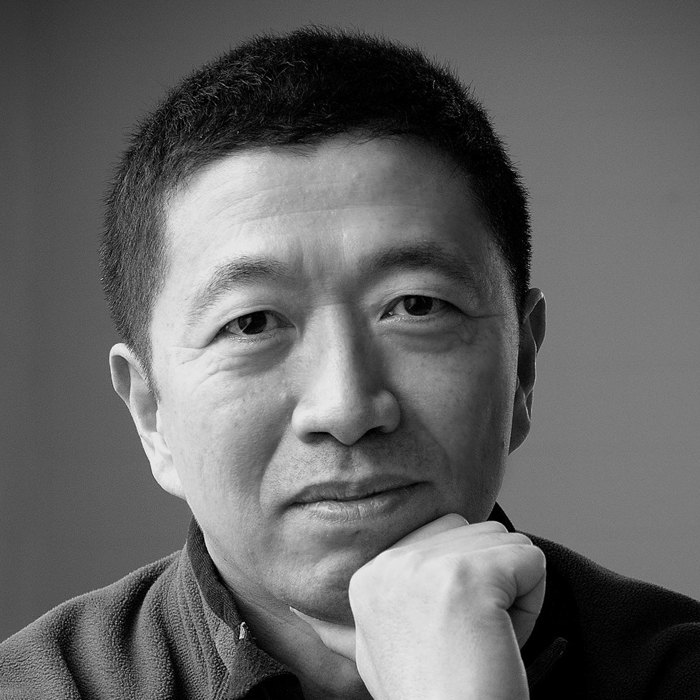
In the 2017 New Year, John Fan and I, together with other 4Aperture members, attended the opening ceremony of the 4Aperture 1st International Photography Exhibition at the Shanghai World Trade Centre. Due to jet lag, John and I woke up very early each morning and had breakfast together during those days. This gave us a good opportunity to discuss a number of topics in detail: current photography trends, our professional learning curves and the experiences we each had accumulated over the years.
My meeting with John in the 2017 New Year provided a good juncture for me to conduct this interview.
John Fan is one of a few photographers I am still in close communications with since our initial contact in 2010. Through these seven years, my impression of John has somewhat deepened: he is the kind of person who reminds me of those essential traits found in photographers – always searching for inspiration, observing subtle details, and thinking deeply. Viewing his works also made me realise that we share many principles in our photography practices. Many of John’s images represent a sense of harmony, clarity and calmness. Viewing these images, the audience would not become entangled by technical details such as the shooting data and post processing tricks. Instead, they would most likely become emotionally engaged by the visual impact of the scenes represented in the images. This is probably the most important message a photographer can convey to the audiences.
One thing John and I talked a lot about during this time was an old topic: why do we take pictures? The advent of digital photography and social media has changed the way we take and view pictures. Nowadays, we have seen that popularity and social media exposure are becoming the primary goal for many photographers, which, in one way or another, is weakening our fundamental aesthetic concepts and values in photography.
Like many forms of art, nature and landscape photography has its own unique characteristics. John is one of the photographers I know who reflects seriously on the essence of photography, and persistently strives to capture such essence in his works. As I read from his book “Spirit of Rationality”, photography is part of John’s life journey, and reflects his feeling toward nature and his own life.
At a recent seminar event, people asked me why I climbed mountains to take photographs. My answer was simple: because I loved mountains. To me, mountains are a land-form where I can get close to nature and my photographs express my feelings towards mountains. I think for both John and I, we place great value on nature and the universe and we express our gratitude towards them through our photography.
In this interview, our 1X audiences will learn more about John’s photography, his personal background and philosophy, his recently published photography book and his involvement in the 1X curating process. I believe people will appreciate and be greatly inspired by John’s stories and experiences regarding nature and landscape photography.
Interview with John Fan
Hi John, I was very glad to finally meet you face to face in Patagonia early last year, after many years of correspondence through the Internet, as well as our very recent meeting in Shanghai during the exhibition. Also thanks for agreeing to have this interview with 1X. I believe many 1X audiences are quite familiar with you as a member of the 1X curator team as well as your stunning works published in the 1X gallery.
However, people may not know much about your personal photography journey, which will be our focus in today’s interview. I personally think this information is very interesting and valuable to many of us.
First, would you tell us something about yourself? Where do you live and what is your current occupation? How did you get into photography? I know your photography interests are quite broad, from landscape to wildlife. Do you have particular interests and focuses in your landscape or/and wildlife photography in general?
I grew up in China. When I graduated from college, I earned a scholarship to study in the United States and have lived there since. During this period, I have studied physics, medicine and photography – three largely unrelated subjects. I have a PhD in physics and I am also certified by the American Board of Radiology and have been working in radiation oncology clinics. In the meantime, I have been studying photography, taking classes over the years.
A camera was the first expensive item I bought when I came to the United States some 30 years ago. Since then, it has been my companion wherever I go. Photography was originally my means to record interesting places to share with my friends and family. It gradually evolved into a serious passion.
I love nature, whether it is landscape or wildlife. I don’t really like to limit myself to a particular subject, rather just head out into nature and capture what inspires me.
During our various discussions and communications over the years, I am impressed that you have strong personal visions that have consistently run through your works. By capturing such visions in your images, the audience can then see your style.
May you share with us some thoughts regarding your personal vision? How do you describe your photography activities in a general sense? During a field shooting, for instance, which factors are important to you in order to produce the best outcome? And how important are principles and personal visions in photography practice?
Nature is a place where I can escape from the urban crowd, find beauty away from human activity and a sanctuary where I can find peace and reflect upon my inner thoughts.
My goal is to seek inspiration from the nature and convey how I felt through my works. Photography allows me to go back to the basics, where a camera is a perfect instrument to see the world in an unbiased manner and I can listen to the voices of nature without interference of the voices of human beings.
A camera can objectively record what is in front of our eyes. However, we only see what our brains tell us to see, which makes a camera not only an extension of our visions but also an extension of our minds. In addition to the technical expertise of photo making, a photographer must also learn to listen to his heart before pressing the shutter release.
I constantly ask myself some questions before I take my camera out of the bag. What do I see? How do I feel? And what does it mean? I try to see beyond what is obvious to the eyes, listen to nature with all my senses and find the meaning from what is around us. I only start to shoot when there is an emotional response within. When I work on my images at home, I ask myself the same questions and try to enhance the feelings that made me capture those images in the field.
I just read your new book Spirit of Rationality (in Chinese 《ç†æ€§çš„çµåŠ¨ã€‹). I really enjoyed reading this book because it is somehow quite different from many other photography books focusing on techniques and skills. This book is more about concepts, philosophy and personal visions in photography. I also share many similar views to the ones you described in your book. I would say that this is a book concerning the photography elementary.
What was your primary motivation to write such a book?
The book is written in Chinese. I thought about writing it during my lecture tours during the last a few years in North America. Its core concept was realised during those presentations and after the many conversations I have had with photographers during that time. I came to a realisation that while many photographers were eager to learn the techniques of photography – some of them lacked thoughtfulness in making an image more than simply just aesthetically pleasing.
This book is written concisely (which I like). It focuses on three key areas: Composition and Idea; Space and Time; and Emotion and Expression.
May you briefly summarise what the main ideas you presented in these three key areas are? What are their connections to one another? And what is your expectation from people after they read your book?
Photography is not only an objective presentation of the world as we see it, but also the world as we feel it. The image making process starts with composition, where we purify the chaotic three dimensional world into a two dimensional image that is simple and attractive. However, we also personalise our images with our emotional responses and enrich their contents with our artistic visions during the process. This is consciously (or unconsciously) carried through in our images, which in turn trigger emotional responses from our viewers.
When we press the shutter release, we sample a moment in the river of time. This moment is frozen in time and we can never duplicate it. However, the river of imagination that runs through everyone’s mind will never freeze. A photographer has to cross these two rivers, taking the moment frozen in time and mixing it with his own creativity to influence viewers’ spatial perceptions and stimulate their emotional responses. Without imagination, a photograph becomes static and lifeless.
It is not a “how to” book of photography, rather an expression of inner thoughts as inspired by nature. I hope to use this book to inspire more photographers to seek meaning beyond simple image making.
 “Book Cover”
“Book Cover”
I remembered that we joined the 1X community at a similar time, and since then, I have been following your works.
The following image “Morning Reflection” is one of your works that evoked an emotional response for me. In fact, not long ago, I just finished studying many images in the 1X gallery with the theme “reflection” and this one was an exceptional work representing the theme.
May you share with us your story of how you created this image? How does this image, as an example, link to the photography theories you described in your book? And what methods did you use in field shooting and post processing?
I took this picture during a trip to Upper Michigan with another well-known 1X.com photographer, Yiming Hu. We drove over 1000 kilometres in the forests to search for a perfect spot to photograph fall colour. Then we arrived at a small lake that was surrounded by an array of brilliant foliage. The temperature was fairly warm during the day, but the weather forecast said it would drop to a near freeze temperature overnight. Years of outdoor experience told us there was a good chance it would be foggy in the morning as the warm water evaporates quickly in the cold air.
We came back early morning before sunrise. To our delight, light fog floated over the entire lake. While I was surrounded by the vibrant colour of the forest, the atmosphere of peace and tranquillity touched me.
I decided to focus on the mystical atmosphere rather than the forest full of colour. I let the lake and fog occupy a large area of the composition. During post processing, I even cropped off some colourful trees on the top and their reflection at the bottom to make the image more panoramic. By doing so, I de-emphasised the trees to leave more room for the water and fog. Ambiguity can often spark a viewer’s imagination. Even if the top part of the trees and much of the reflection were cropped, viewers would have no problem imagining how the forest would look like. The pre-dawn blue hour also cast a blue haze over the image. It further enhanced the senses of peace, quietness and coldness.
You are one of a few photographers whom I know to have been seriously involved in both landscape and wildlife photography. Usually, these two distinguished photography genres require different approaches and techniques. However, by looking at your works on both types, I feel a sense of harmony – for example, the following image (photo9) looks very harmonious. It may not be simply classified into a landscape or wildlife type, but it indeed touches audiences.
May you share with us your ideas of how you came about to capture such artistic features in your wildlife photography?
I often photograph both landscape and wildlife subjects during a single hour in the field. These two types of photography genres usually require a distinct set of skills. However, I don’t focus on whether my image is landscape or wildlife. I often take wildlife photos with typical landscape photography techniques, or vice versa. My thought process is usually similar to “reverse engineering” – first pay attention to the inspiration and story from nature, and then pre-visualise the image that can convey the inspiration. Finally, focus on the technical details to turn the idea into reality. Whether the image requires landscape techniques or wildlife techniques makes little difference to me. They are just camera settings at this point.
It was a chilly winter morning in New Mexico when I was photographing cranes and snow geese. The cranes had rested over a swamp area during the night. Light fog hovered over the water at dawn when the sun turned it into a steamy golden pond. I was immersed in the dreamy mood and asked myself - how do I enhance the dream? I envisioned an image in which birds fly over the water and they were blurry as if they were flying in a dream... My experience told me that the cranes would take off soon after the sunrise and they would take off in a direction that was against the wind. So I aimed the camera to the area in the predicted flight path of the cranes, set the manual focus at the distance I predicted, locked down the camera on the tripod, and used ISO200, F16, 1/6 second shutter speed. I have photographed cranes with slow shutter speed in many occasions. I knew that the cranes would appear blurry whilst still maintaining some detail at this speed. This was almost a typical technique I would use for landscape work, except I set the camera at a high-speed continuous shooting mode.
Soon after I was ready, the cranes took off without warning. I pressed down the shutter release and only captured two frames before they were long gone.
This is an interesting topic. Many times, I was asked by photography friends that how to get a photograph published on 1X. To be honest, I could not answer this question confidently because I do not exactly know how the curating process works on 1X. And ironically, from time to time, I also got my submitted images rejected, even if they received high scores from people’s votes.
You have been working as a 1X curator for quite a while. May you share with us some information on this topic? If someone asked you how to get images published on 1X, what are your suggestions?
I was often asked the same question. It is a difficult question to answer. Asking what a good image looks like is almost equivalent to asking what a good dish tastes like. It depends on personal preferences. We often judge a photograph by its technical merit: exposure, sharpness, colour, tonality etc. While those are essential to photography, they are often cited only because they are the objective aspects of an image that people can provide a more definitive opinion on. What contributes to the soul of a photographic work goes far beyond objective measures and is often subjective.
There are many popular photography sites on the internet, hosting billions and billions of images. There must be a way to rate the images so that viewers can find good images. Vast majority of rating systems used today are popularity based, relying on hits, favours, comments, etc. to gauge the general acceptance and popularity of an image. It also depends on how much time the photographer spends on the internet and how many followers he or she gathers. The problem with this kind of approach is that eye-catching images usually attract immediate attention and become popular; then popular images become more accessible to the viewers and become even more popular. In the end, the web sites will be flooded with popular images that look very much similar to each other. Subtle, artistic, creative, unconventional images will have little chance to become popular. However, photography is an art that has many diverse styles; the images that attract immediate attention may not necessary be great images.
1X operates in a way that every image published is curated by a group of curators. It is a mountainous amount of work to curate every image, but this is what makes 1X unique. Curators are all accomplished photographers and have diverse backgrounds. Now, instead of trying to impress the average viewers to become popular, one has to impress the curators to get the images published. Popularity on 1X does little to get an image published.
How to impress the curators? Curators are similar to other viewers when they look at an image, except they look at hundreds of excellent images a day. An eye catching but cliché image that attracts an average viewer’s attention might appear boring to curators. On the other hand, a creative image that is unpopular might look refreshing to them and therefore draw their attention. If there were one thing I could suggest, it would be creativity. Creativity is the heart and soul of any visual art. Creative images generate lasting interest.
I know photography is your passion but not your full-time occupation. I am in the same position as you. Personally, I enjoy the lifestyle combining both science and art – scientific research make me happy as much as photography does.
May you share with us your views on your professional work and photography activities? How many times each year will you travel away from your family to pursue photography?
Photography takes up a lot of time and energy. It is extremely challenging to achieve a balance between professional work and photography activity. Professional work takes away some freedom to travel and photograph. However, it can also be one of the sources of inspiration in addition to providing means to ensure artistic freedom. Image making is not just about photography, it reflects a journey through life where no time is wasted as long as we are true to tasks in front of us.
I use the majority of my vacation time pursuing photography related activities- sometimes even bringing my family with me. In 2016, I visited two continents for the first time in my life – Africa and South America. I will return to Africa again this summer. I will continue to find time to travel. However, many of my photos were captured not far from home. We often leave our backyard just to travel to someone else’s backyard to find inspiration and totally neglect inspirations around us.
Finally, as an established photographer, what advice would you provide if someone asked you for advice in photography?
We live in a complex universe where everything has its beauty and every moment has its purpose. It waits for photographers to discover it. The best advice I can give to young photographers is never stop observing, never stop shooting, and above all, always listen to your heart.
Thanks very much John, today’s interview is really interesting. I am sure our audiences will be inspired by your story and images. I wish you all the best in your photography.
John Fan is the co-founder of the 4Aperture photography group. He has grew up in China and lived in the United States for over 30 years. He has a PhD in physics and he is an expert in radiation oncology, serving as the president of the American Association of Physicists in Medicine Midwest Chapter. John has been an editor and curator for 1x.com and a judge in numerous international competitions. He has travelled around the world seeking inspiration from nature and discovering nature’s beauty unseen by others. His works have won many prestigious international awards and have been published in numerous magazines. He is the author of the recently published photography book “Spirit of Rationality – Voices from Nature”.
 | Write |
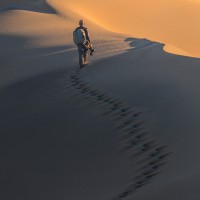 | Greg Barsh Thanks, John and Yan, for sharing your insight, vision, approach, and, of course, images! |
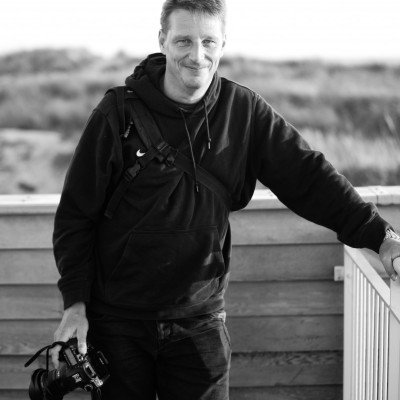 | Leif Løndal PRO Really nice reading. Fun to read you are not full-time photographer. I know the feeling that you have to earn a living and still passionate about photography. I wish you many good holidays and many days off, so you can capture more fantastic works.
Many Greetings Leif. |
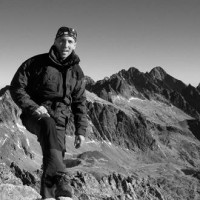 | Peter Svoboda MQEP CREW It was a big pleasure to read this interview and to get you know a bit better John.
I would wish we'll meet one day in real :) All my best, Peter |
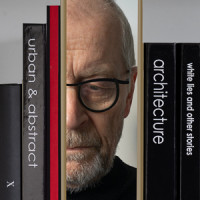 | Luc Vangindertael (laGrange) CREW Inspirational interview, also for photographers who are not into landscape and wildlife. Would love to read your book John, but obviously not in Chinese ... |
 | Larry Deng PRO Thank you so much John for your encouragement and I have learn lots from you. Keep doing the great work. |
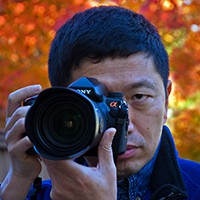 | John Fan CREW Your work is inspirational, Larry! |
 | Graham Daly A really great interview with a really talented photographer. Very interesting personal insights were shared and some very helpful tips. Makes for perfect reading on a Friday morning! Great job folks! |
 | John Fan CREW Thanks, Graham! |
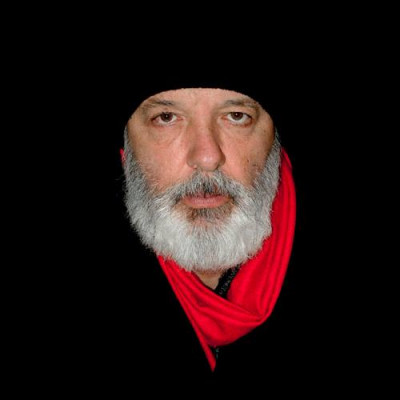 | Massimo Della Latta Splendide fotografie. Complimenti |
 | John Fan CREW Thanks, Massimo! |
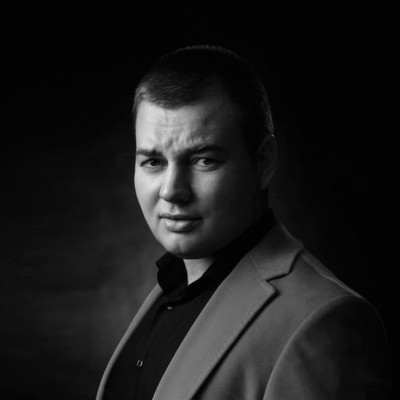 | Mikhail Potapov CREW Stunning photos of nature. Very interesting interview. Thank you Yvette! Thank you John! |
 | Yvette Depaepe CREW Thanks for your appreciation, dear Mikhail. Cheers, Yvette |
 | John Fan CREW Thanks, Mikhail! |
 | Yvette Depaepe CREW Big thanks to John Fan for this most interesting interview and to Yan Zhang for leading it.
Cheers, Yvette |
 | John Fan CREW Thanks Yvette! |